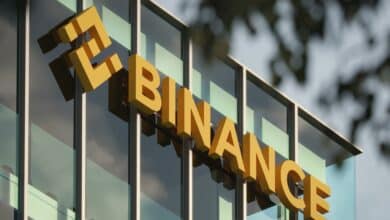
The phrase, Front Running, started within the stock market and it is used to explain the use of insider information about some upcoming deals to open a position in the market before the competition becomes fierce. We can say it is a kind of insider trading.
However, front running is not only applicable to the stock market but it is found in the decentralized finance space (DeFi) and the NFT — Non-Fungible Token marketplace. In the NFT marketplace, it happens because an insider at the NFT platform is aware of the next NFTs to be featured which definitely will cause an increase in value for the piece.
With the information, they go ahead to purchase the NFT before it starts going viral or getting featured on the platform, which will eventually lead to an increase in its price. The value of the NFTs increase when they are publicized for sale and the insider leverage on that information to make a huge profit.
Technically, front running is a kind of insider trading because assets are being traded based on information that is not available to the general public. An example of this is in September 2021 when it was realized that Nate Chastain, the product head of the biggest NFT marketplace OpenSea purchased an NFT just before it was highlighted on the website which he eventually sold for a huge profit. What he did was to take advantage of information not available to the public (often called insider information) such as the next NFTs OpenSea is trying to push, to gain an unfair advantage over other NFT traders.
This illegal activity was discovered by an individual who compared the timestamps of the NFT transaction with the time the NFTs in question were promoted by OpenSea.
However, front running in the crypto space has become more technical than the traditional markets because there are no bots programmed specifically for the purpose of discovering information that is not likely available yet to the public. In the next section, this guide will cover what front-running bots are and how they work.
What is a front-running bot?
Since the issue of insider trading and front running has to do with time — executing a transaction just before the information motivating it is public. It is quite difficult for an average crypto or NFT trader to lay their hands on this information, and if at all they do, it is quite difficult for them to manually execute the trades just before the information is public. This is where the front running bots come in.
There are bots programmed to allow you to place trades automatically instead of keeping track of every move in the market yourself.
To put it in better perspective, the only way an average trader in the crypto space can engage in front running is to keep track of every move that can cause a huge impact in the market and execute a trade accordingly before the impact is felt. So, instead of keeping track of these moves and waiting for the best time to either sell or buy, the bots will access and synthesize the market data automatically and create the transactions for the asset automatically for the trader.
Basically, front-running bots scan transactions that are pending and increase the gas fee so that the miners can attend to them first in an attempt to front-run a trade that will affect the movement of prices in the market.
Here is how they work;
The design of every blockchain, particularly Ethereum’s, allows all the transactions submitted to remain in the mempool, where they will be waiting to be selected and processed by a miner. Now, the bots (and the miners also) can scan the mempool to discover transactions that can be used for front running in the arena of crypto trading.
Since front running has to do with time, the front runner bots are programmed to work within a millisecond timeframe. This is because they need to be able to scan transactions on the mempool while computing the optimal transaction size, configuring the transactions, and executing the transactions in less than a second. You would agree that this is quite impossible to do when operating manually.
The bot is programmed to front runs transactions with certain gas price, slippage and trade volume by submitting a buy order in the same block concurrently with a higher gas fee. An example of this is when the liquidity of an automated market maker (AMM) is being topped up; the front running bot will scan and recognize the transactions and manipulate the arrangement of transactions in the block in order to make a profit from the trade.
Is Front Running illegal in the crypto space?
Front running and insider trading are completely illegal in the traditional stock market simply because the information is not available to the general public. However, it is different in the crypto space because every information is stored in an auditable digital ledger that is available to everyone. For this reason, front running is not illegal for both crypto and NFT trading.
The ability to spread information with the internet has increased front running in the crypto market. Even though front running is completely banned in the traditional market mainly because of the leverage on data that is not available to the public, a crypto or NFT trader using a DEX – Decentralized Exchange is using the data available to the public. technically, this means that the trader is not shorting the system.
What this is all about is that; if you have access to the list of every buy and sell order (especially the one that can move the market rapidly) and you are able to insert your orders before the trades are executed. Basically, front running is a beneficial DEX trading strategy. It allows the traders to see the orders locked in the smart contracts on the DEX as long as it is built on a public blockchain like Ethereum. Traders can then establish an order with a higher cost than the previous incoming orders and as a result, they can claim more lucrative orders.
Difference between the Front Running tactics and wash trading in the crypto space
Another system used to profit from the crypto market is Wash trading. Wash trading happens when a crypto trader or investor buys and sells a particular asset just to inflate the value artificially. Compared to wash trading, front running is a direct attack on the blockchain where the trader scans the blockchain for a transaction after it has been submitted to the mempool but has not been finalized, just to reorder the transaction for their personal gains.
In particular, the NFT market is susceptible to wash trading. This is because users can just access any NFT platform or marketplace by just connecting their wallet address to the platform and they can trade with another person without necessarily having to unveil their identity. By implication, just one person can establish multiple access to the NFT platform by just creating different wallets.
By doing this, it is easy for the user to complete a trade all by themselves. They can just sell it from a wallet of their own and buy it from another wallet that still belongs to them. By implication, the trading volume of the asset increases at the end of each transaction giving the illusion that the asset is in high demand and thus an increase in value.
There are different tactics for front running like a sandwich that focuses on exploiting the services and protocols in the DeFi space. Sandwiching happens when a user placed two orders – one before the trade they are trying to front-run and another after the trade. In sandwiching, the two trades are said to be used to front run and back run concurrently while leaving the original pending order in the middle.
For instance, if a victim wants to trade a crypto asset X, let’s say Solana (SOL), for another crypto asset Y, say Ethereum (ETH), which is used more for significant purchases. As soon as the order is submitted to the mempool just before it was approved, the front running bot will detect the order and front-run the victim by ordering crypto-asset Y which is Ethereum (ETH).
This purchase action from the attacker will adjust the slippage of the order based on the available liquidity, the volume of the asset to be traded, and the projected increase or decrease in the price of the asset. Also, the purchase action from the attacker will boost the price of the crypto asset Y. Because of the price increase and the high purchase of the asset Y, the victim will have to buy at a higher price and the attacker will also sell at a higher price.
Another way of executing front running in the crypto space is called the displacement attack. In this case, the miner creates a transaction to replace the original transaction. Even though the replaced transaction might still be completed, the result will not be as it was intended originally.
Types of Front Running Attacks
In this section, we will consider the different ways a front-running attack can be executed. This is because attackers have developed different ideas to exploit the crypto market without being caught while making as much as possible.
- The Displacement Attack
This method involves taking over a block with an order by displacing the original order from the block. Even though the original order will still go through, it might not have the same effect intended because it has been disturbed with another.
- The Insertion Attack/Sandwich method
In this kind of front running attack, the original order is kept in between (sandwiched by) two less costly orders with the main purpose of profiting from the difference. The intention of the attacker here is not to hold the crypto-asset for a period of time.
- The Suppression Attack
In the type of front running, the attackers use a method called the denial of service because all they have to do is to prevent the victim to place the buy order on the exchange. In a situation where a large block of the transaction is intended to be executed, the crypto trade is prevented from doing so, hence, gets a lower chance of getting the order through.
How to Detect Front Running in the NFT Space
The simple way to identify front running is to monitor the trade data from the user like the wallet addresses the trades were made from, the purchases that followed the sales of NFTs, and the series of transfers of funds that follows.
When trying to detect front running in the NFT space, there are three significant data points to pay attention to, and this includes the selling or acquisition of a financial instrument by the front runner, the legitimate or the original transaction, and the potential unwinding of the financial instrument by the front runner in an attempt to bring the cycle to a close.
Also, any analyst attempting to detect front running or any potential front running tactics can search for the buy (or sell) orders that are close to the buy (or sell) order of an NFT artist in the same instrument that affects the price of the NFT at a particular time.
Furthermore, the team in charge of compliance should be able to use the trade reconstruction capabilities (which is all about pulling different streams of data together) to connect data that are not structured (like electronic and voice communications) to the trades. This will offer context to rule out the attack. These can be genuine dialogues with the buyers of the NFTs.
Ways to Prevent Front Running in the Crypto Market
The way to prevent or limit front running in the crypto space is to split a big transaction into smaller bits while adjusting the low slippage. Another potential way is that developers should create anti-front running measures such as creating a hidden mempool to make transactions private (hidden from the front runners and the front running bots).
To explain better, users can break their seemingly large transactions into smaller bits instead of executing them in one go. This will mean that the scan from the front running bots will not find these transactions appealing because of the value to be mined. By implication, instead of front running it, the bots will pass the transactions.
As soon as the bot places orders, the price of the crypto asset is altered. Therefore, ensuring that the adjustment slippage is kept minimal can help prevent customers from losing their funds. Contrastingly, having a low slippage can make the execution of orders more difficult.
Another way that can be employed by developers in limiting front running is by using the private transaction service created by SpartPool called TaiChi Network. The MEV (miner-extractable value) bots programmed to scan mempool will not be able to find any orders because they are hidden from any Ethereum nodes but are available only to SparkPool. By the way, MEV is a metric used to tell how much money the miners on a blockchain can gain when they reorder, include, or exclude transactions.
KeeperDAO used a secret mempool called the Hiding Book Mempool and it has a bot called the Keeper bot which profits from the MEV metric through asset liquidations and arbitrage trading by simply passing through orders and loan requests. The revenues from the MEV are deposited in the ROOK treasury and the users are eligible to get a profit through the ROOK tokens.
Other ways to prevent or counter front running includes:
- Gas Price Limit
In this method, developers will limit the gas price of every order. This means that miners can only accept orders that are below a certain limit of gas price. The reality here is that front runners cannot request preferential treatments from miners by increasing the gas price and they cannot jump in front of the original order.
The only downside to this method is that there will be a need for constant supervision in order to be able to set proper limits.
- The Off-chain ordering solutions
This solution proposes that the initial stage of an order should perform off the blockchain. To this end, the service providers can choose the best platform to suit the needs of the order such as features for customer service like messaging.
The only downside to this method is that transactions will be less transparent and this will defeat the purpose of the blockchain technology.
Conclusion
Front running is inevitable, and there will still be front runners on Ethereum 2.0 as well as other crypto and NFT trading platform. However, this doesn’t mean that the crypto or NFT space should be boycotted; it simply means that everyone is required to be armed with the right techniques to ensure individual safety.
Tokenhell produces content exposure for over 5,000 crypto companies and you can be one of them too! Contact at info@tokenhell.com if you have any questions. Cryptocurrencies are highly volatile, conduct your own research before making any investment decisions. Some of the posts on this website are guest posts or paid posts that are not written by Tokenhell authors (namely Crypto Cable , Sponsored Articles and Press Release content) and the views expressed in these types of posts do not reflect the views of this website. Tokenhell is not responsible for the content, accuracy, quality, advertising, products or any other content or banners (ad space) posted on the site. Read full terms and conditions / disclaimer.







